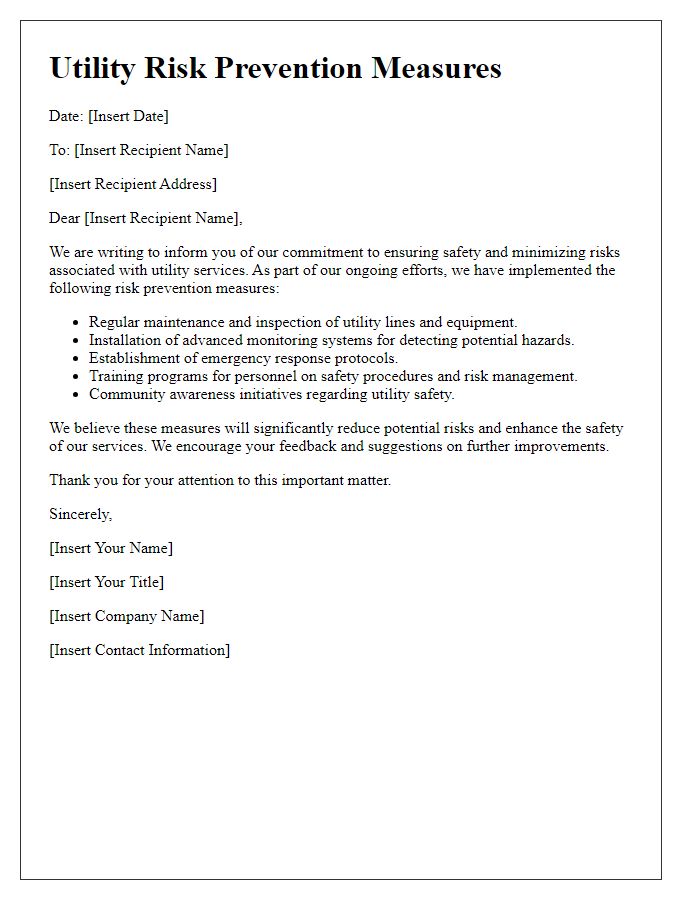Managing utility risks can often feel overwhelming, but with the right strategies in place, it becomes much more manageable. By proactively identifying and addressing potential challenges, organizations can safeguard their operations and enhance their overall resilience. Whether you're dealing with regulatory compliance, cybersecurity threats, or infrastructure vulnerabilities, effective risk management is crucial for success. Interested in discovering effective utility risk management strategies? Read on to find out how you can fortify your approach!

Comprehensive Risk Assessment
Utility risk management employs comprehensive risk assessment strategies to identify and mitigate potential threats to infrastructure, such as electrical grids and water supply systems. This involves analyzing various risk factors, including natural disasters like earthquakes (with magnitudes over 6.0), technical failures of equipment like transformers, and human-related incidents, such as cyberattacks on control systems. Vulnerability assessments focus on key geographic areas prone to flooding, such as coastal cities, and the potential impact on critical assets. Strategies incorporate redundancy in service delivery to ensure continuous operation, particularly for essential services like electricity and clean water. Regulatory compliance with standards set by governing bodies, such as the Federal Energy Regulatory Commission (FERC) in the USA, is vital for ensuring safety and reliability. Continuous training for personnel on emergency response protocols enhances preparedness, while adopting advanced technologies, like predictive analytics, helps in forecasting risks and developing effective response plans.
Stakeholder Communication Plan
Effective stakeholder communication is essential in utility risk management for ensuring all parties are informed and engaged. Key stakeholders typically include regulatory bodies, community members, internal teams, and emergency response agencies. A comprehensive communication plan should outline specific communication methods, such as regular updates through email newsletters, town hall meetings, and stakeholder surveys. Identifying risk scenarios, such as severe weather events or infrastructure failures, enhances focus on proactive engagement strategies. Communication should also delineate responsible spokespersons, frequency of updates (e.g., monthly reporting), and feedback mechanisms to gauge stakeholder sentiment. Incorporating clear visual aids, such as infographics on risk assessment results or incident response timelines, can facilitate better understanding among diverse audiences. Additionally, leveraging digital platforms, such as social media and dedicated websites, allows for immediate dissemination of information during critical events. Adhering to this structured stakeholder communication plan can significantly mitigate misinformation and build trust within the community.
Emergency Response Protocols
Emergency response protocols are essential measures for utility companies to effectively manage risks associated with disruptions. These protocols outline procedures for incidents such as natural disasters (hurricanes, earthquakes) and equipment failures (transformer malfunctions, pipeline leaks). Establishing a clear chain of command is vital, ensuring that designated emergency response teams are ready to act swiftly. Communication is crucial, with real-time updates disseminated to stakeholders, including local authorities, employees, and the public, through various platforms such as social media and emergency alert systems. Training programs should be conducted regularly, simulating scenarios to prepare staff for potential hazards. Evaluation and updating of protocols are necessary to incorporate lessons learned from past events, ensuring continuous improvement in response effectiveness.
Regulatory Compliance
Utility risk management strategies encompass various regulatory compliance measures essential for ensuring operational safety and environmental protection within public utilities, such as water and electricity services. Regulatory frameworks, including the Clean Water Act (CWA) and the National Electrical Safety Code (NESC), mandate strict adherence to safety standards to prevent hazardous incidents and maintain service integrity. Implementation of comprehensive compliance audits can assess alignment with local, state, and federal regulations, identifying potential gaps in environmental practices or safety protocols. Additionally, employee training programs focused on compliance awareness can minimize human errors that may lead to regulatory violations. Regular inspections of infrastructure, such as pipelines and power lines, are critical for maintaining compliance and mitigating risks associated with aging equipment, ultimately safeguarding public health and safety.
Technological Integration and Monitoring
Technological integration in utility risk management strategies plays a crucial role in enhancing operational efficiency and ensuring safety. Advanced monitoring systems, such as Internet of Things (IoT) sensors, are deployed across expansive infrastructure networks like electricity grids and water supply systems. These IoT devices continuously collect data on various parameters, including voltage levels, pipeline pressure, and environmental conditions. Real-time data analytics enable utilities to predict potential failures before they occur, significantly reducing downtime and maintenance costs. Moreover, integrating artificial intelligence (AI) algorithms improves decision-making processes by identifying patterns in historical data and optimizing resource allocation. With cybersecurity threats on the rise, secure communication protocols are essential to protect sensitive information from potential breaches, safeguarding both the infrastructure and customer data. Implementing these technological advancements not only enhances resilience against natural disasters and operational hazards but also ensures compliance with regulatory standards, ultimately leading to improved service reliability for consumers.













Comments